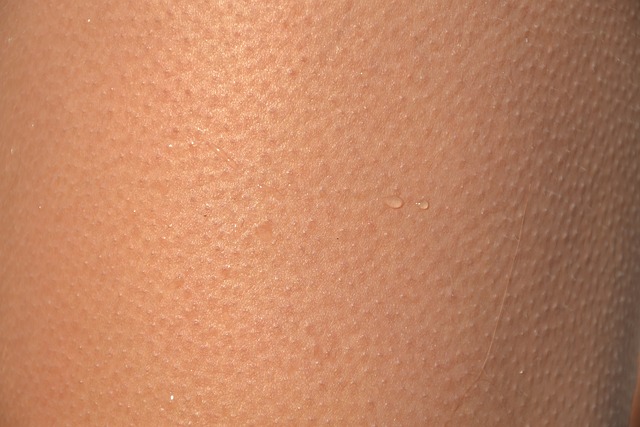Skin tags are benign skin growths, scientifically known as acrochordons, which can appear as soft, stalk-like protrusions ranging from a few millimeters to 5 centimeters in size. Typically found in areas with skin folds or where there is frequent friction, they resemble warts or moles and should be identified accurately by a healthcare professional. To prevent skin tags, maintain good overall skin health through a balanced diet rich in vitamin C and zinc, stay hydrated, exercise regularly, and keep a healthy weight. For those in Edinburgh, Skin Tag Removal Edinburgh clinics offer expert care with safe and effective removal methods such as cryotherapy, surgical snip excision, or electrocautery, performed by skilled dermatologists. Regular self-examination and monitoring of skin, especially in common affected areas like underarms, neck, and groin, are important for early detection and treatment. Home care can include exfoliation and the use of tea tree oil for its antiseptic properties. Professional removal services in Edinburgh should be utilized after consulting with a dermatologist or specialized clinic to ensure proper treatment. Additionally, gentle skincare and avoiding tight clothing can help prevent irritation and support circulation, potentially reducing the likelihood of skin tags developing.
Skincare is a journey of maintaining balance and health. In this article, we delve into the preventative measures one can take against skin tags, those harmless yet sometimes bothersome growths. Whether you’re exploring home remedies or seeking professional medical advice in Edinburgh, understanding how to prevent skin tags is key. We cover lifestyle adjustments, dietary considerations, and the significance of sun protection as part of a comprehensive approach to skin tag prevention. Our guide also features insights from leading dermatologists specializing in Skin Tag Removal in Edinburgh, ensuring you are well-equipped with knowledge for natural and safe practices. Join us as we navigate through the strategies that can help you keep your skin smooth and tag-free.
- Understanding Skin Tags: Identification and Prevention Strategies
- Effective Home Remedies to Deter Skin Tag Formation
Understanding Skin Tags: Identification and Prevention Strategies

Understanding skin tags is the first step in preventing their formation. These benign growths, commonly referred to as acrochordons, are typically harmless and can appear anywhere on the body where there are skin folds or friction occurs. They present as soft, pedunculated (on a stalk) pieces of skin that may range from a few millimeters up to 5 centimeters in size. Identification is key; they often resemble warts or moles and can be similar in appearance, making it important to consult with a healthcare professional for accurate diagnosis. Prevention strategies focus on maintaining healthy skin practices, as the exact cause of skin tags remains unknown. Regularly examining your skin and noting any new growths can aid in early detection. Maintaining a balanced diet, staying hydrated, and engaging in regular exercise are general wellness practices that support overall skin health and may help mitigate the risk of developing skin tags. For those seeking specialized treatment, Skin Tag Removal Edinburgh clinics offer professional and safe removal options, utilizing methods such as cryotherapy, surgical snip excision, or electrocautery. These treatments are conducted by trained dermatologists who ensure patient safety and comfort. To minimize the risk of skin tags, it’s advisable to maintain a healthy weight through diet and exercise, avoid tight clothing that causes friction, and manage any underlying health conditions that may be associated with their development. Regular dermatological check-ups are also recommended to monitor existing skin tags and address any new ones promptly.
Effective Home Remedies to Deter Skin Tag Formation

When it comes to preventing skin tags, a proactive approach at home can be both effective and cost-saving. Regular examination of your skin, especially in areas where skin tags are common, such as the underarms, neck, and groin, can help you identify any early signs of skin tag formation. Early detection allows for timely intervention before they become larger or more numerous.
Home remedies that have shown efficacy in deterring skin tag formation include a regimen of exfoliation to remove dead skin cells and maintain healthy skin. Tea tree oil, known for its antiseptic properties, can be applied topically to prevent the growth of skin tags. Additionally, maintaining a balanced diet rich in vitamins and minerals supports overall skin health. Foods high in vitamin C, such as citrus fruits, broccoli, and strawberries, promote collagen production, which is crucial for healthy skin. Including zinc-rich foods like pumpkin seeds and beans can also aid in preventing skin tag formation by regulating hormone levels that may influence their growth. For those seeking professional services like Skin Tag Removal Edinburgh, it’s advisable to consult with a dermatologist or clinic specialized in such procedures to ensure safe and effective treatment options. Regular use of gentle skin care products and avoiding tight clothing can further minimize the risk of skin tags by preventing skin irritation and maintaining good circulation.
In conclusion, maintaining a healthy lifestyle and being mindful of your skin’s condition can significantly reduce the likelihood of developing skin tags. The strategies outlined in “Understanding Skin Tags: Identification and Prevention Strategies” combined with the practical advice provided in “Effective Home Remedies to Deter Skin Tag Formation” offer comprehensive approaches for those residing in or seeking skin tag removal solutions in Edinburgh, such as Skin Tag Removal Edinburgh services. By adhering to these preventative measures and utilizing natural remedies when appropriate, you can keep your skin smooth and free from the inconvenience of unsightly skin tags. Remember, consistent care and attention are key to maintaining clear and healthy skin.
